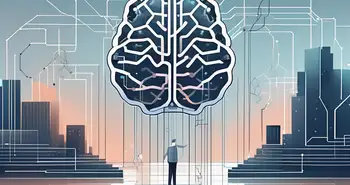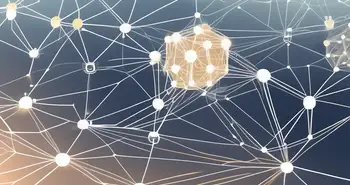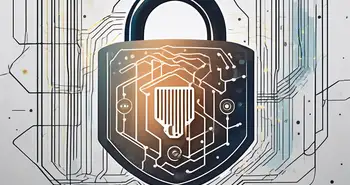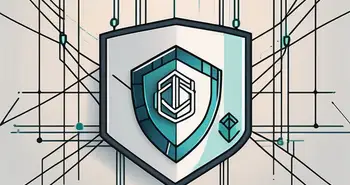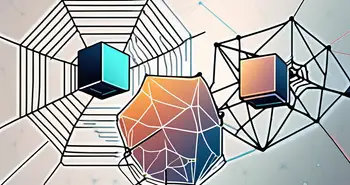Uncovering the Secrets of Blockchain Forensics
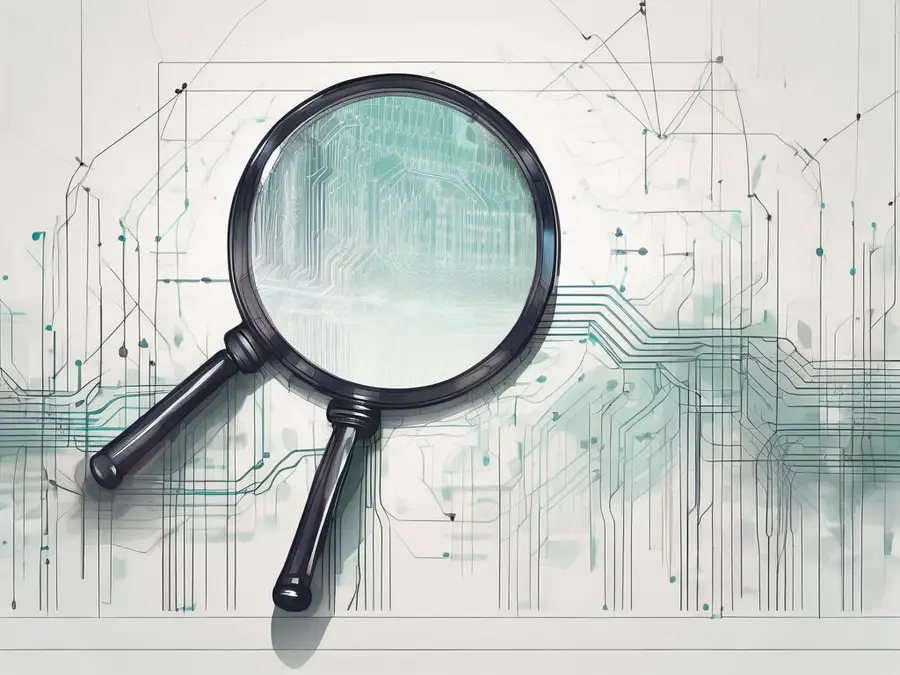
In today's digital world, where cryptocurrencies and blockchain technology reign supreme, it has become increasingly important to understand the intricate workings of this fascinating landscape. One such area that has gained significant importance is blockchain forensics. As an expert in this field, I have spent years uncovering the secrets of blockchain forensics, and in this article, I will shed light on its significance, the science behind it, the challenges it faces, and its promising future.
Understanding Blockchain Forensics
Blockchain forensics refers to the process of investigating and analyzing blockchain transactions to trace illicit activities, identify criminals, and ensure the security and integrity of the blockchain network. It involves a combination of traditional forensic techniques and specialized tools tailored for analyzing blockchain data. Blockchain forensics plays a crucial role in combating fraud, money laundering, and other illegal activities that can occur within the cryptocurrency ecosystem.
Defining Blockchain Forensics
At its core, blockchain forensics is the discipline of applying investigative techniques to the analysis of blockchain data. Through meticulous examination, experts can identify patterns, trace transactions, and understand the flow of digital assets within the blockchain network. By doing so, they can uncover the identities of those involved and ensure the accountability and transparency of the blockchain ecosystem.
The Role of Blockchain Forensics in Cryptocurrency
Blockchain forensics plays a vital role in the world of cryptocurrency. It enables governments, regulatory bodies, and law enforcement agencies to monitor and regulate transactions, ensuring compliance with anti-money laundering (AML) and know your customer (KYC) regulations. By employing blockchain forensic techniques, investigators can track the movement of funds, detect suspicious activities, and prevent illegal practices.
One of the key challenges in blockchain forensics is the pseudonymous nature of blockchain transactions. While the transactions themselves are transparent and recorded on the blockchain, the identities of the individuals involved are often represented by cryptographic addresses. To overcome this challenge, blockchain forensic experts employ various methods to link these addresses to real-world identities.
These methods include analyzing transaction patterns, examining IP addresses associated with transactions, and leveraging data from cryptocurrency exchanges where users often need to provide identification. By piecing together these different sources of information, investigators can establish connections and uncover the true identities behind blockchain transactions.
Another important aspect of blockchain forensics is the analysis of transactional metadata. While the content of a transaction is encrypted and cannot be directly accessed, metadata such as transaction timestamps, transaction sizes, and transaction fees can provide valuable insights. By analyzing this metadata, investigators can identify suspicious transactions that deviate from normal patterns and raise red flags for further investigation.
Furthermore, blockchain forensics goes beyond just tracking illicit activities. It also plays a crucial role in ensuring the integrity of the blockchain network itself. By analyzing the blockchain data, experts can detect and prevent attacks such as double-spending, where an individual attempts to spend the same cryptocurrency more than once. This helps maintain the trust and reliability of the blockchain network, making it a secure platform for conducting transactions.
The Science Behind Blockchain Forensics
Behind the scenes of blockchain forensics lies an intricate process that combines cutting-edge technology and expertise in data analysis. Let's delve deeper into the science that powers this field.
Blockchain forensics is a fascinating field that requires a deep understanding of the inner workings of blockchain technology. It involves a meticulous process that starts with the collection of blockchain data. This data, which is stored in a decentralized and immutable ledger, holds the key to uncovering hidden patterns and relationships within the blockchain.
The Process of Blockchain Analysis
Once the blockchain data is collected, the real work begins. Blockchain analysts meticulously dissect and analyze the data to extract valuable insights. They employ advanced techniques and tools to navigate the complex network of transactions and entities within the blockchain.
One such technique is graph analysis, which allows analysts to visualize and understand the relationships between different transactions and addresses. By mapping out these connections, analysts can identify suspicious activities and trace the flow of funds across the blockchain network.
Data clustering algorithms also play a crucial role in blockchain forensics. These algorithms group together transactions or addresses that exhibit similar characteristics, enabling analysts to identify clusters of potentially illicit activities. This helps in the identification of money laundering schemes, fraud, and other criminal activities that may be hiding within the blockchain.
Tools and Techniques in Blockchain Forensics
To effectively navigate the intricacies of blockchain forensics, investigators rely on a plethora of tools and techniques. Blockchain explorers are invaluable resources that allow users to search, visualize, and analyze transactions on different blockchains. These explorers provide a user-friendly interface that simplifies the process of exploring the blockchain, making it accessible to both experts and newcomers in the field.
Specialized software also plays a crucial role in blockchain forensics. Transaction monitoring tools, for example, help analysts track and monitor suspicious activities in real-time. These tools can flag transactions that exhibit certain characteristics, such as a high volume of funds or connections to known illicit entities, allowing investigators to take immediate action.
Clustering algorithms, on the other hand, aid in the identification of suspicious clusters within the blockchain. By grouping together transactions or addresses that share similar characteristics, these algorithms help analysts uncover hidden patterns and connections that may not be immediately apparent.
Personal Advice: As an expert in the field, I can't stress enough the importance of staying updated with the latest tools and techniques in blockchain forensics. The ever-evolving nature of cryptocurrencies and blockchain technology demands constant learning and adaptation. Embrace the learning process, attend conferences, and network with fellow experts to enhance your skills and stay ahead of the curve.
Blockchain forensics is an exciting field that combines the power of technology and data analysis to uncover the truth hidden within the blockchain. By understanding the science behind blockchain forensics and staying up-to-date with the latest tools and techniques, investigators can effectively combat illicit activities and ensure the integrity of the blockchain ecosystem.
The Challenges in Blockchain Forensics
While blockchain forensics has proven to be a powerful tool in combatting illicit activities within the cryptocurrency space, it is not without its challenges. Let's explore some of the hurdles faced by experts in this field.
Privacy Concerns in Blockchain Forensics
Blockchain networks are designed to provide transparency and immutability, but this can pose challenges when it comes to privacy. While the public nature of blockchain allows for traceability, it also raises concerns about individual privacy. Striking a balance between transparency and privacy is a delicate task that requires careful consideration and adherence to ethical standards.
Moreover, the pseudonymous nature of blockchain transactions adds another layer of complexity to privacy concerns. While wallet addresses are not directly linked to real-world identities, sophisticated analysis techniques can sometimes de-anonymize users, potentially compromising their privacy. This highlights the need for robust privacy-enhancing technologies and practices in blockchain forensics.
Technical Hurdles in Blockchain Analysis
Analyzing blockchain data is a technically-demanding task. The decentralized nature of blockchain networks, coupled with their immense size, presents challenges in terms of scalability and computational resources. Additionally, the emergence of privacy-focused protocols, such as zero-knowledge proofs, adds further complexity to the analysis process. Overcoming these technical hurdles requires continuous innovation and collaboration among experts in the field.
Furthermore, the rapid evolution of blockchain technology introduces additional technical challenges for forensic investigators. Updates to blockchain protocols and the introduction of new consensus mechanisms can impact the tools and techniques used in forensic analysis. Staying abreast of these developments and adapting investigative methodologies accordingly is crucial for ensuring the effectiveness of blockchain forensics in an ever-changing landscape.
The Future of Blockchain Forensics
As new technologies emerge and regulatory frameworks evolve, the future of blockchain forensics is filled with possibilities and exciting opportunities.
Emerging Trends in Blockchain Forensics
Advancements in fintech, artificial intelligence, and machine learning are poised to revolutionize the field of blockchain forensics. These technologies can enhance the efficiency and accuracy of analysis, enabling investigators to uncover illicit activities more effectively. Furthermore, the integration of blockchain forensics into broader cybersecurity systems will strengthen the overall security of the digital ecosystem.
The Impact of Regulatory Changes on Blockchain Forensics
Regulatory bodies globally are recognizing the importance of blockchain forensics in combatting financial crimes. As a result, we can expect increased collaboration between law enforcement agencies, regulatory bodies, and cryptocurrency exchanges. This collaboration will lead to the establishment of standardized protocols, streamlined information sharing, and enhanced cooperation in combating illegal activities within the blockchain realm.
FAQs – Uncovering the Secrets of Blockchain Forensics
What is blockchain forensics?
Blockchain forensics is the process of investigating and analyzing blockchain transactions to trace illicit activities and ensure the security and transparency of the blockchain network.
What are the challenges in blockchain forensics?
Privacy concerns and technical hurdles, such as scalability and emerging privacy protocols, pose challenges in blockchain forensics. Striking a balance between transparency and privacy and overcoming technical limitations require continuous innovation and collaboration.
What does the future hold for blockchain forensics?
The future of blockchain forensics is promising. Emerging trends in fintech and the integration of artificial intelligence and machine learning will revolutionize the field. Additionally, regulatory changes will lead to enhanced collaboration and standardized protocols, ensuring the effective combat of financial crimes in the blockchain realm.
In conclusion, blockchain forensics is a critical field that helps maintain the integrity and security of the blockchain network. By understanding and harnessing the power of blockchain forensics, we can ensure a safer and more transparent digital landscape. Stay curious, continue learning, and together, let's uncover the secrets of blockchain forensics.
As we continue to explore the depths of blockchain forensics and its pivotal role in securing digital transactions, it's clear that the tools we use to navigate this landscape are just as important as the expertise we bring to the table. Morpher.com stands at the forefront of this revolution, offering a trading platform that embodies the innovation and security that blockchain technology promises. With its zero-fee structure, infinite liquidity, and unique trading experiences, Morpher is the perfect partner for those who want to take control of their digital investments. Embrace the future of trading with a platform that's as invested in your safety and success as you are. Sign Up and Get Your Free Sign Up Bonus today, and join the community that's reshaping the world of investing.

Disclaimer: All investments involve risk, and the past performance of a security, industry, sector, market, financial product, trading strategy, or individual’s trading does not guarantee future results or returns. Investors are fully responsible for any investment decisions they make. Such decisions should be based solely on an evaluation of their financial circumstances, investment objectives, risk tolerance, and liquidity needs. This post does not constitute investment advice.

Painless trading for everyone
Hundreds of markets all in one place - Apple, Bitcoin, Gold, Watches, NFTs, Sneakers and so much more.

Painless trading for everyone
Hundreds of markets all in one place - Apple, Bitcoin, Gold, Watches, NFTs, Sneakers and so much more.


